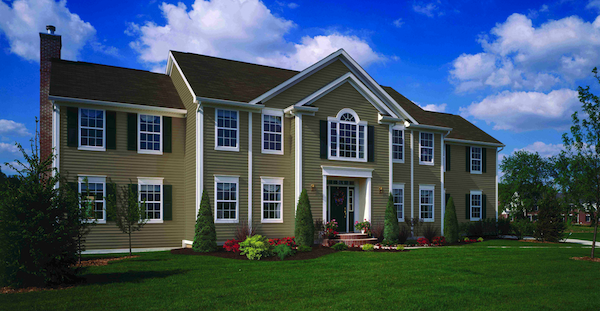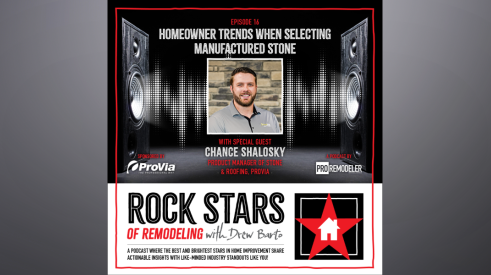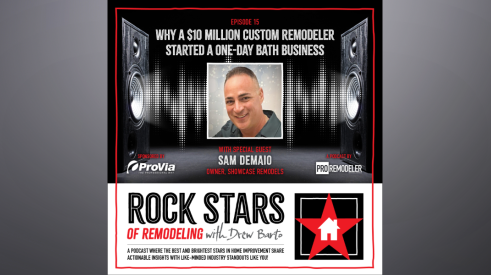People love to dump on vinyl siding. What’s not to hate? If you’re scratching for reasons, just go to one of the many Web threads devoted to throwing mud, rocks, or hailstones at vinyl siding. For instance, a Web search using the search term, “ugly siding” results in nearly half a million pages of results. Most (but not all) are about vinyl. “I am looking for alternatives to UGLY vinyl siding,” writes “George” on Home Owners Hub. “I can not stand the look of vinyl siding, and will not live in a house covered with this garbage,” he writes. Someone in Texas responds that he or she prefers cedar but “so do the termites.”
That’s it in a nutshell. Five years ago, even the stately The New York Times weighed in on the subject of vinyl siding and its sometimes less-than-authentic appearance. Author Christine Haughney noted that vinyl has morphed from a building material to a metaphor for all that’s hideous in contemporary exterior construction. “Some people think it’s a scourge on neighborhoods,” she writes. “Bloggers devote Web sites to mocking its worst examples. While vinyl siding may seem like a material that simply protects homes from the elements, it draws every element of opinion about its appearance and presence in neighborhoods.” Reaction in the form of comments on her piece is similarly all over the place. “Toxic,” “awful stuff,” “trash,” etc., are some of the epithets hurled at vinyl. But, comments one reader, “maybe vinyl is what the homeowner can afford. Can we stop being such snobs about housing?”
Vinyl: One Tough Hombre
Although the vinyl siding industry has gone to great lengths to enable the product to hold its color, replicate the shape of other materials (it’s available in more profiles than any other kind of siding), and withstand the blows of dirt clods, softballs, rocks, and hail by thickening it, has even added a layer of foam backing for insulation, you get the sense that none of this is of paramount importance to the homeowner in the market for re-siding their home. What’s most important is whether or not vinyl siding can do the job—that is, keep moisture out—last a few decades, look reasonably decent from the street, require minimal maintenance, and, top of the list, be affordable.
Skeptics love to sneer at it, but plenty of vinyl still goes on houses. Don’t think so? The National Association of Home Builders, which recently released a study on the most popular types of siding by region, has a map that shows, region by region, the two most popular cladding materials. Data is drawn from new single-family residences built in 2014. In the East—New England and the Mid-Atlantic states—it’s vinyl by a mile, and vinyl holds its ground as market leader into the North Central states as well. Out West, stucco rules (more than 50 percent of new homes use this material), followed by fiber cement. Down South builders choose brick or brick veneer first, followed by vinyl (east of the Mississippi) and fiber cement (west through Texas). Since homeowners faced with the need to replace siding (or roofing) tend to put on more of what’s already there, it seems fairly certain that vinyl isn’t going away anytime soon as a siding product. When it wears out, falls off, or tears away, they’ll put more on.
For Curb Appeal, Against Seams
Or … they’ll replace it when they have to move. Homeowners who are planning to sell often invest money to spruce up the look of the house so that potential buyers can imagine themselves living there. The dozen most effective ways to do that, published in Better Homes & Gardens, suggests replacing “ugly or damaged siding.” It’s always a smart investment as a home improvement, bringing back in increased market value most, if not all, of what the homeowner spent to get it done. New siding can kickstart a non-starter of a home sale, and vinyl, the magazine says, is the “most affordable option. Once a bland material compared to wood, vinyl siding is now available in a wide variety of colors and styles … so that you’re likely to find something that suits both your taste and your budget.”
Taking a leaf from the book on branding, a Harrisburg, Pa., company bills itself as Curb Appeal Home Improvement and specializes in “premium insulated vinyl siding.” Curb Appeal promises a job that minimizes “unsightly seams” and panels nailed on every 16 inches “so you don’t have to run down the street looking for your siding after a storm.”
Duane Poole, owner of Preferred Exteriors & Renovations, in central New York, posted this on his blog a year ago: “Many People have written and asked: What would you or do you put on your home Duane?” To which the contractor responds (to his own question): “I choose Certainteed Monogram siding for not only my own home but that of my customers …” Poole cites two reasons: its thickness and a warranty against fading. The contractor’s argument for vinyl is that the problem is not the product, but substandard installation. Seamless Steel Siding of Cheyenne, Wyo., which aims to convince homeowners that they’d be wise to replace their vinyl with steel, disagrees, of course, and takes aim at … the seams. “The average home has 130 splices,” the company’s site says. “ABC Seamless steel siding eliminates the UGLY splices, that’s why we’re known as, “The Siding Without the QUACKS!” Not to be outdone, the ABC Seamless franchise in Madison, Wis., publishes a roundup of bad vinyl (see “Vinyl Siding … the BAD, the WORSE and the UGLY!”), a cautionary tale along the lines of: This could happen to you if you don’t buy our product. The site also calls attention to Time magazine’s inclusion, in 1999, of vinyl siding as one of the “100 Worst Ideas of the Century.” Worse than prohibition of The Jerry Springer Show? You decide.
Affordability, durability, and low maintenance see vinyl continuing to be the siding material the market favors
Add new comment
Related Stories
How to Stop Selling and Start Closing Sales
One of the biggest mistakes a salesperson can make is viewing the sales process as a one-sided transaction
Home Improvement Success: Luck, Hard Work, or Who You Know?
Even the most brilliant marketing mind could see fewer opportunities due to lack of networking
Homeowner Trends When Selecting Manufactured Stone
On this episode of Rock Stars of Remodeling, ProVia Product Manager of Stone & Roofing Chance Shalosky joins host Drew Barto to reveal design and color trends that contractors should consider when selling manufactured stone in 2024
Why A Successful Custom Remodeler Started a One-Day Bath Business
On this episode of Rock Stars of Remodeling, Showcase Remodels Owner Sam DeMaio shares why he decided to add a one-day bath business and offers tips on how contractors can accumulate wealth
Learn from the Best in Home Improvement and Remodeling
This year’s Pinnacle Experience aims to help remodelers stay ahead of their competitors by featuring captivating keynote speakers and subject matter experts, collaborative roundtable discussions, and networking with proven players from across the country.
Get the Most Out of Your Teams with This Leadership Style
The transformational leadership style focuses on inspiring and motivating team members to achieve their full potential and exceed their expectations
3 Reasons Contractors Should Set Same-Day Sales Appointments
Director of Home Improvement Drew Barto writes that contractors that aren't implementing same-day sales appointments are missing out on opportunities to close more business
Registration Open for The Pinnacle Experience 2024
Register today for The Pinnacle Experience 2024 in Baltimore from June 26-28. Join the best and brightest in home improvement and remodeling for insight, advice, and relationship-building that will help you take your business to new heights.
How Contractors Can Determine Lead Value
On this episode of Rock Stars of Remodeling, Builder Prime Founder and CEO Jonathan Weinberg reveals how contractors can effectively determine the value of each lead to their business, and why they must do so
24 Marketing Tips for Home Improvement Contractors in 2024
Quick-hitting advice on how contractors can increase and enhance lead flow in 2024












